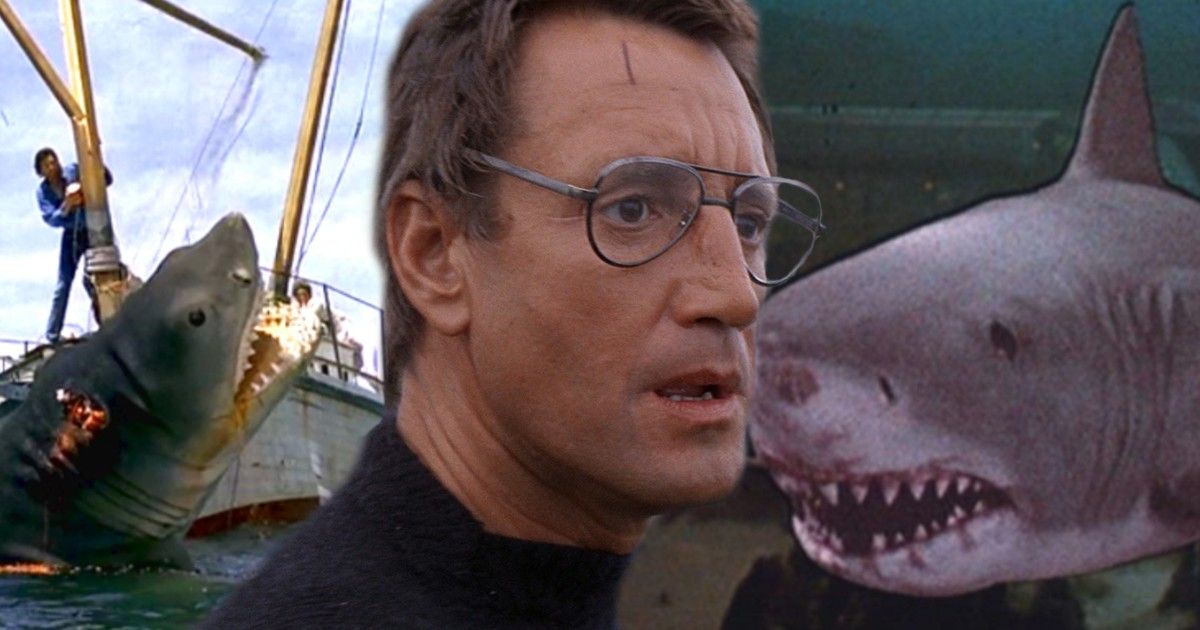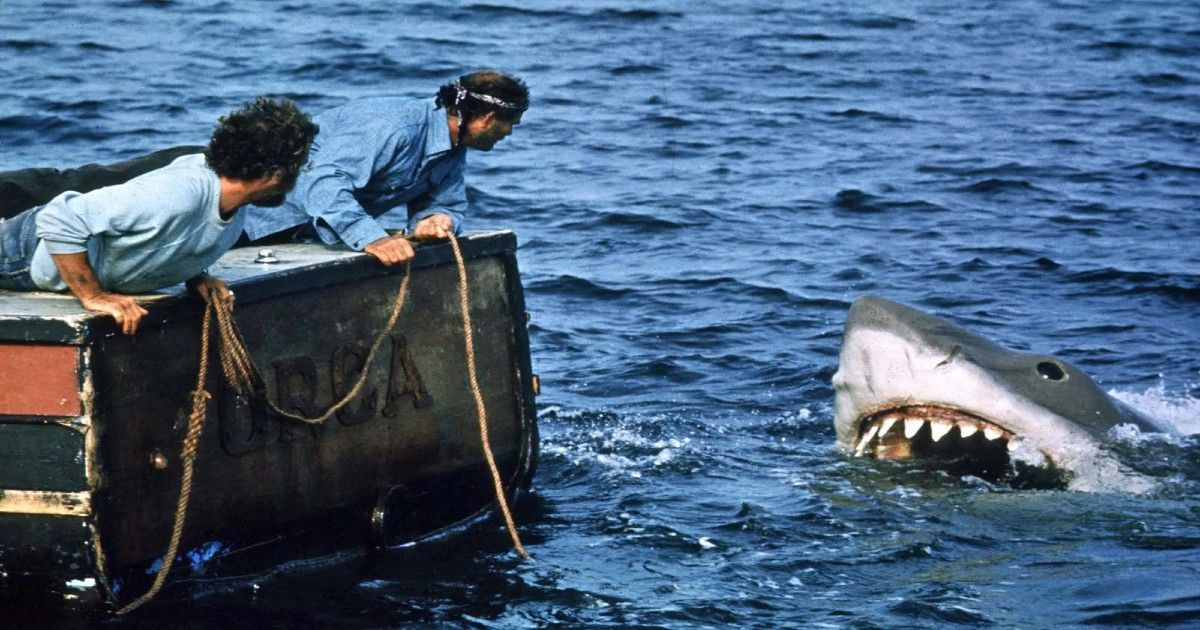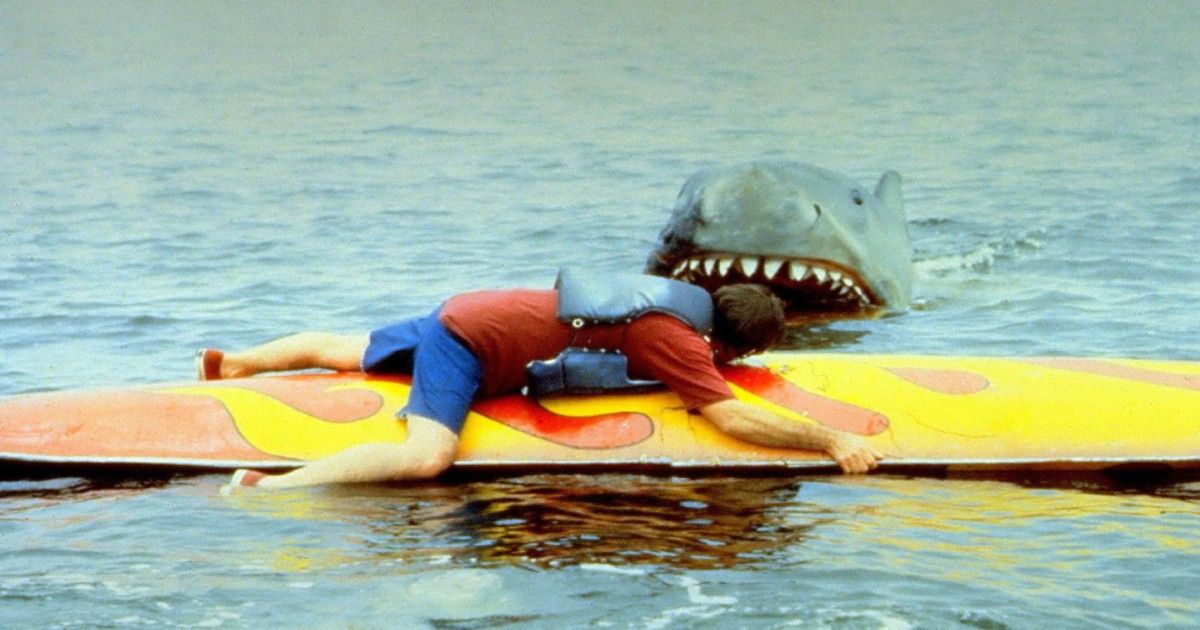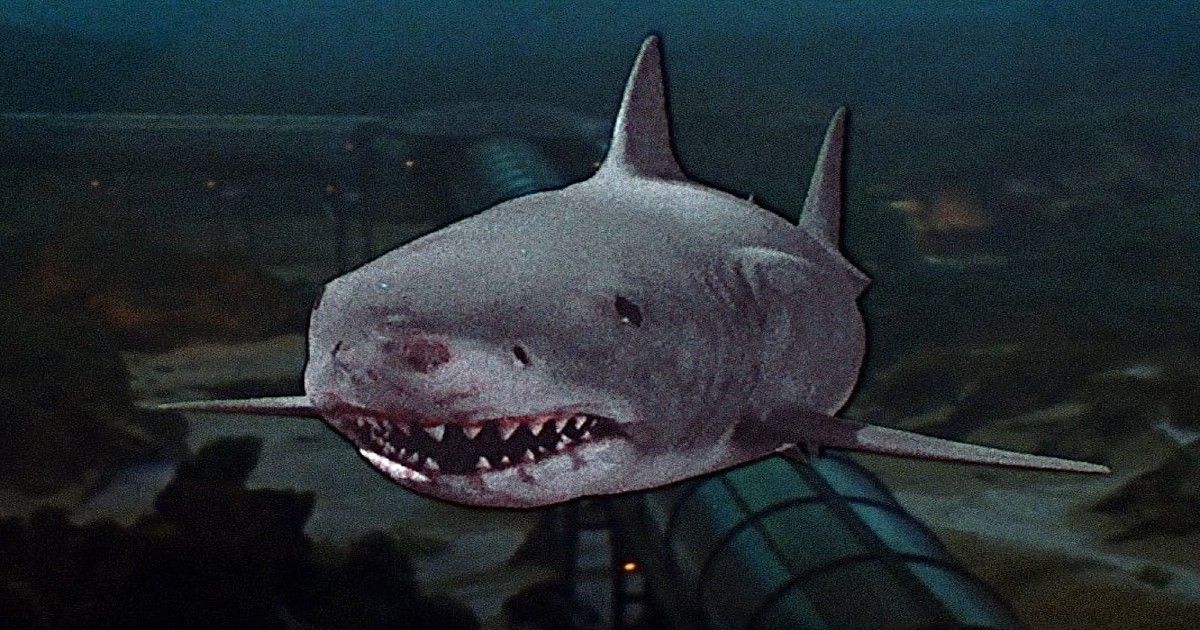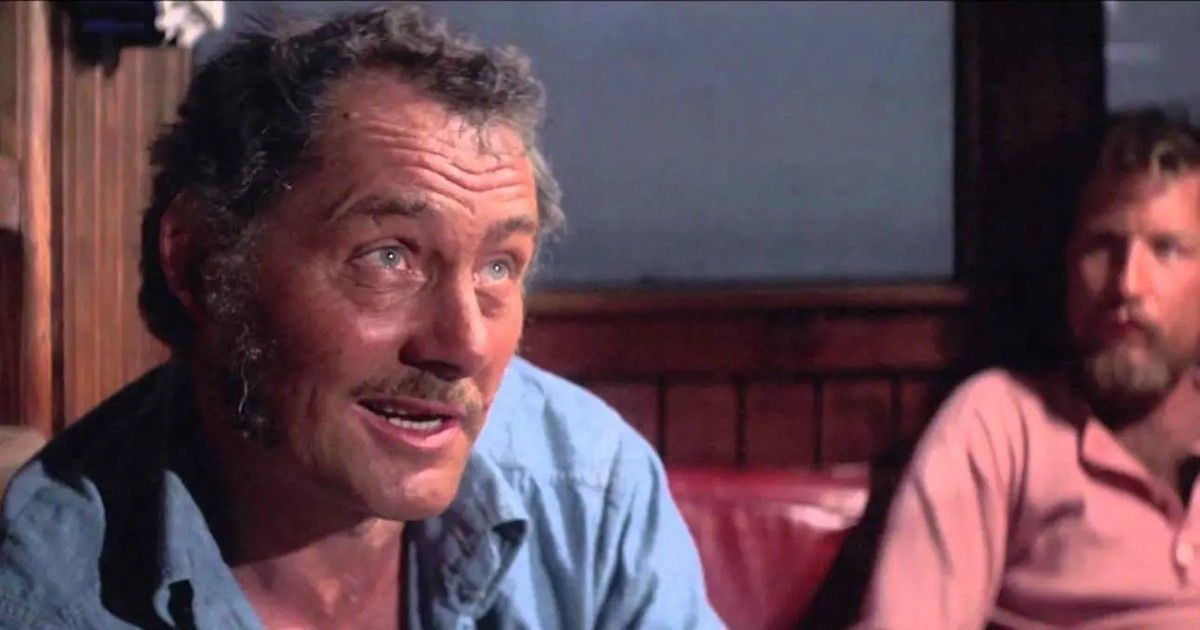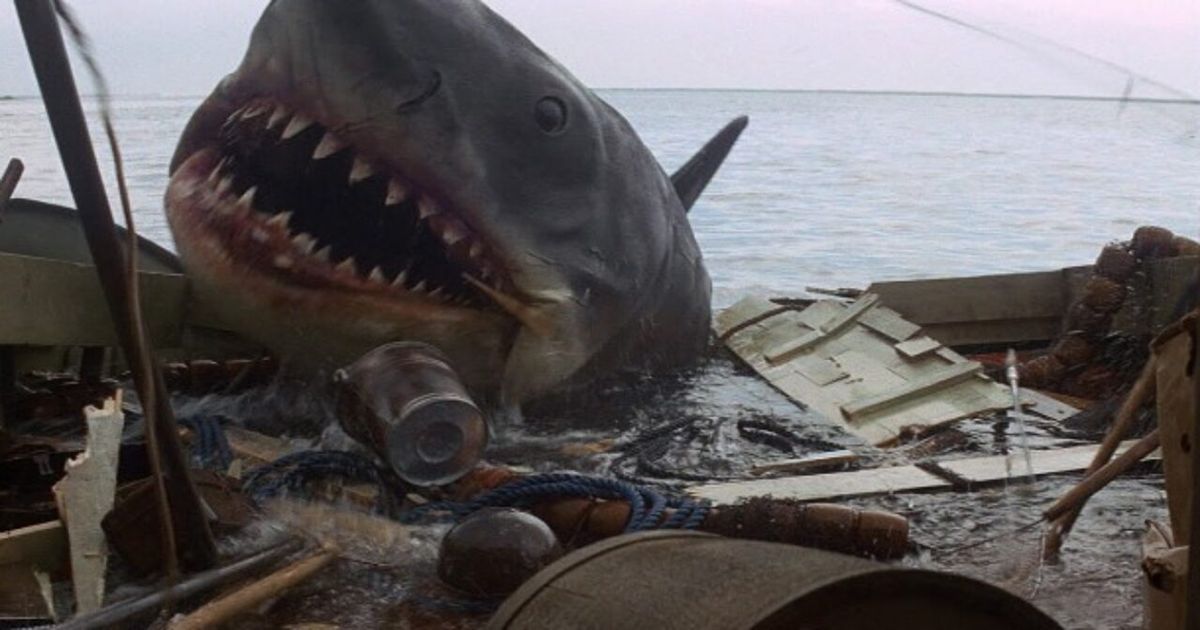Today, summer is known as the big season for movies. This is when some of the biggest hits of the year are released and when the box office sees some of its largest numbers. However, this wasn't always the case. Summer was spent at the beaches or doing other outdoor activities, and audiences didn't always want to spend their summer in a building watching a movie. That all changed in 1975, the year Steven Spielberg made his first huge splash with Jaws.
The movie caused audiences to turn up in droves, and it quickly became the highest-grossing movie of its time. This was the beginning of the summer blockbuster, and cinema was never quite the same. Jaws was based on the book by Peter Benchley and changed how people saw the ocean. Even today, it is widely regarded as one of the best films of all time. It was so popular, that other shark films began to pop up in order to cash in on the craze. None came close, however, to the success of the untouchable Jaws, including its own sequels. Going forward, summertime was the prime season to release big films, and Universal wanted to relive the success of the film with these sequels, released from 1978 to 1987.
These three sequels failed to reach the success of the original. In fact, the latter two were huge box office bombs and are still seen as some of the worst sequels. Suddenly, people didn't think of what made the original so good. The name Jaws brought with it a laughingstock in the public eye. From poking fun at the number of sequels to the goofy tagline of the fourth movie, ("This time it's personal"), Jaws was nothing more than a punchline. This begs the question — what happened? How did one of the most groundbreaking movies of all time spawn some of the worst movies of the '80s?
Highest Form Of Flattery
To look at the events that led to the Jaws sequels, one must look at the aftermath of the original film. Countless rip-offs were released hoping to ride the coattails of the movie's success. Suddenly, one of the hottest genres was the killer shark movie. Put a shark on the poster, and you're sure to make some easy box office dough, right? Not exactly. What these movies failed to realize is that Jaws was never a killer shark movie per se. A killer shark movie is about nothing more than a shark. The shark drives the film to the detriment of everything else. With Jaws, the shark drives the plot but not the story. These rip-offs threw a bunch of uninteresting characters into the ocean where they were eaten by a shark. These filmmakers believed the audience wanted to see sharks and nothing more.
This misguidance led to the films being panned by critics. However, the success of Jaws shouldn't be ignored. Their plan worked to an extent. The sequels drew in crowds looking to relive the feelings they felt when they saw Jaws (especially Jaws 2, which made $208 million off a $20 million budget, nearly $1 billion today adjusted for inflation). By the time audiences realized that same feeling wasn't there, the studio already had their money. The success (with vastly diminishing returns) of these movies led to more and more rip-offs.
Back Into The Water
In 1978, three years after the original, Universal took fans back to Amity with Jaws 2. The movie brought back Roy Scheider as Chief Brody, who faces yet another shark. The bait and switch nature of the film started immediately, as the advertisements led fans to believe the original shark is back for more. The explosive finale of the original sees Brody blow the shark into bloody pieces. The advertisements for Jaws 2 see a giant shark with some serious facial damage. This implied that the shark survived, and returned to killing like a slasher villain. This wasn't the case, as fans quickly realized.
This shark was an entirely new beast who received facial damage early in the film. The supposed rarity of the original shark attack had happened yet again. Jaws 2 isn't nearly as bad as the next two films but fails to live up to the original. Roy Scheider still gave an enjoyable performance, but the plot was essentially a watered-down version of the original. It even has a similar finale. Still, fans flocked to the theaters at the premise of a new Jaws film. Though it only made half as much as the first Jaws, it still was an aforementioned success, so much that Universal banked on another sequel for release in 1983.
From Jaws to Joke in 3-D
For the third film, Universal decided to use a popular gimmick of the time to drag in audiences. The third movie was infamously released in 3-D. The third Friday the 13th movie revitalized the 3-D gimmick, and Jaws 3-D hopped right on that train with no questions asked. The movie had no returning cast members and focused solely on the shark. Jaws 3-D only existed to show off 3-D effects and bring in visitors to Sea World. The film was the least successful film of the bunch and was mocked mostly for the poor special effects and forced 3-D. Besides this, the film was successful enough to spawn one last sequel. Jaws: The Revenge was released in 1987 and bombed on all fronts.
The film follows a shark that actually follows the Brody family from Amity to the Bahamas seeking revenge. If this wasn't ridiculous enough, Chief Brody was killed offscreen out of fear. The man who killed two great whites died out of fear of another one returning. This insult to a great character was just one minor issue in a film full of them. This is the movie that killed the franchise and turned it into a laughingstock. So the damage was done, but why did these films fail? Other than the obviously silly plots, why did these films bomb so tremendously?
A Shark's Success
The three sequels focused far too much on the shark. The shark was the main character just like Michael Myers became the main character in the later, weaker Halloween movies. This simple fact is why these films came nowhere near the level of success of the original. The success of Jaws comes from the human characters. The chemistry between Brody, Hopper, and Quint as they hunt down the shark is what gives the movie its heart. The suspense comes from the isolation the characters feel. They are trapped on the shark's home turf, and they must rely on their wits to survive.
On top of this, the relationship between the three men carries the film when the shark isn't present. Take a look at one of the best scenes for example. The three men are hanging out and drinking. They share stories of how they received their various scars when Quint tells a chilling tale of the USS Indianapolis. Not only does this story allow Robert Shaw to give an incredible performance, but it also allows the audience to know just how deadly sharks can be.
No More Jaws
Moments like this simply don't exist in the sequels, as they are more interested in showing the shark every five minutes. Because of some famous behind-the-scenes issues with the shark in the first film, it barely appears on the screen. When it does, audiences are scared because they aren't used to seeing it. On top of this, the characters are all likable in their own way, so nobody wants to see them die. With Jaws, a shark is in a movie about human characters, not the other way around.
Today, there are still countless ridiculous shark movies, from Sharknado to The Meg. These films are usually self-aware and know that they are silly. With so many terrible shark movies on top of the tarnished reputation of the Jaws franchise, it is easy to forget just how influential the original movie was. There hasn't been a Jaws movie since the fourth in 1987, and this is unlikely to change anytime soon. The original movie has a legacy that can't be touched, and history has shown it shouldn't be challenged.

